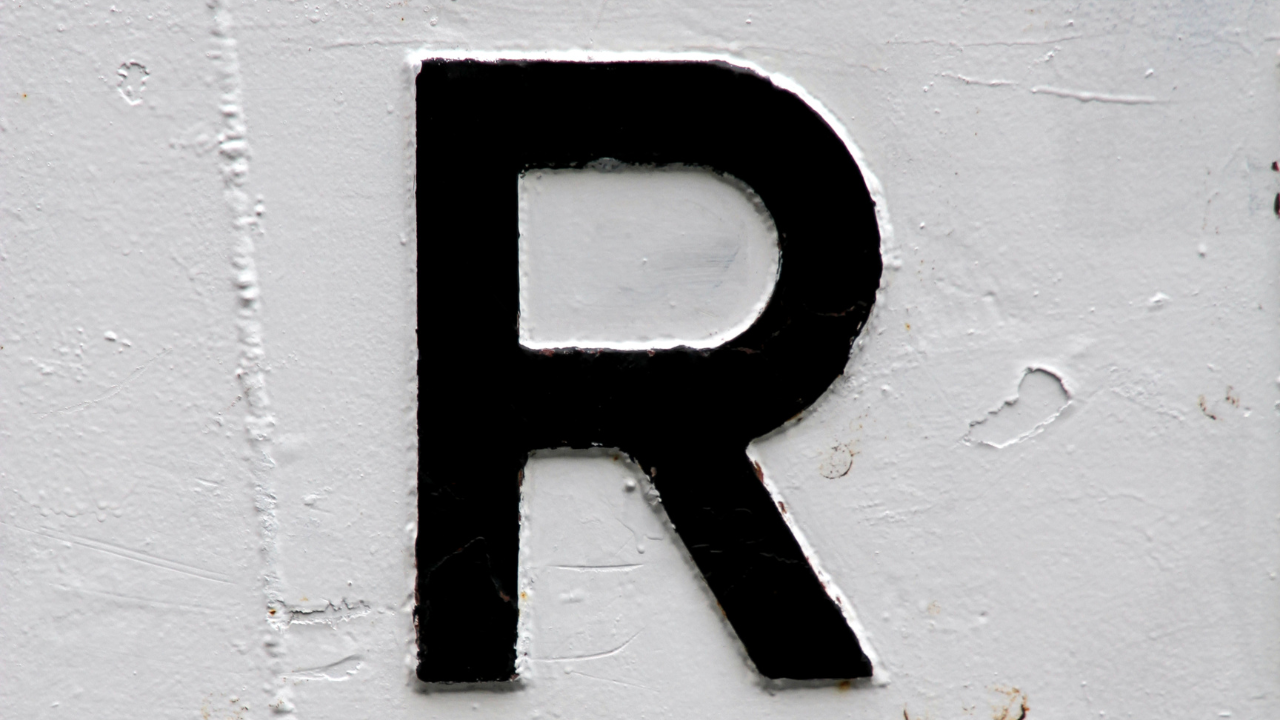R Train - Your Guide To New York's Local Line And More
Table of Contents
- Introduction to the R Train
- What's the Deal with the NYC R Train?
- Exploring the Hong Kong R-Train
- Understanding the R Language 'Train' Function
- Other R Train Tidbits
Introduction to the R Train
When you think about getting around in a big city, the local public transit system often comes to mind, and in New York City, the R train is a familiar sight for many who travel between boroughs. This particular subway line serves a significant stretch of the city, helping folks move from Queens all the way down to Brooklyn. It’s a route that connects various neighborhoods, offering a way for people to reach their destinations, whether that's for work, school, or just to explore. You know, it's pretty central to how a lot of folks get about their day, providing a steady connection across different parts of the urban landscape.
The R train has a story, too, with a history of changes to its paths and names stretching back to 1916. It's not just a set path on a map; it's a piece of the city's movement, adapting over time to the needs of the people it serves. Knowing about its stops, how it connects with other lines, and when it operates can make your travels much smoother. For anyone needing to get from one point to another, having a good grasp of the R train's details is, well, pretty helpful, you might say.
But the term "R train" isn't just about New York's subway. As a matter of fact, there are other important references to "R train" that appear in different contexts, from a specific type of train in Hong Kong to a very useful tool in computer programming. This piece will go into the various meanings and uses of "R train" as they come up in the information we have, giving you a more complete picture of how this simple designation can mean so many different things, depending on where you are or what you're doing. It’s quite interesting, actually, how one phrase can have such varied applications.
What's the Deal with the NYC R Train?
The R train in New York City is a local service, which means it makes stops at every station along its designated path. This train line runs from Forest Hills in Queens, travels through Manhattan on the BMT Broadway line, and then continues on to Bay Ridge in Brooklyn. It provides a steady connection for commuters and travelers across these three boroughs. Understanding its route is, you know, pretty essential for anyone planning a trip or just trying to get a feel for how the city's public transport works. It's a key part of the daily rhythm for a lot of folks.
When you're looking for information about the R train, you can often find maps that show all the stations it serves. These maps are quite helpful for seeing where you can get on and off, and where you might be able to switch to another train line. Knowing the locations of the stations and which other lines you can transfer to is, in some respects, really important for planning your journey effectively. It helps you figure out the best way to get to where you need to be, especially if your destination isn't directly on the R train line.
Accessibility is another important aspect of the R train's stops. Information is usually available about which stations have features that make them easier to use for everyone, like ramps or elevators. This kind of detail helps people with different mobility needs plan their trips with greater ease. It’s about making sure that the public transport system is available and usable for as many people as possible, which is, you know, a pretty fundamental idea for city services.
- Ipcam Guys Telegram
- Not What He Expected Anissa Kate
- What Is The Rarest Hair Color
- Josh Hartnett Workout
- 1911 Forum
Getting Around with the NYC R Train
The R train follows a path that takes it along the Queens Boulevard, Broadway, and 4th Avenue local lines. This means it offers a way to get to many different parts of the city without needing to switch trains too often, if your destination is along its route. For instance, if you're trying to get to a spot on 53rd Street or 45th Street, the information suggests you might need to use the N train instead, as the R train might not serve those specific stops directly at certain times or under certain conditions. So, it's always good to check the specific details for your trip.
A subway map for the R train typically shows you an overview of all the stations that the line covers. This visual aid is incredibly useful for getting a sense of the entire route and for planning your travel. It allows you to see the full extent of the R train's reach, from one end to the other, giving you a comprehensive picture of its service area. You can pretty much trace your entire journey just by looking at one of these maps, which is, you know, quite convenient.
Beyond just the map, opening a specific transit application can provide even more detailed information about the R train line. These apps often show stop-specific alerts, like notices about particular stations that might be experiencing issues or closures. This real-time information can be a real help when you're on the go, allowing you to adjust your plans if something unexpected comes up. It’s like having a little personal assistant for your train travel, telling you what's happening right now, which is, honestly, a pretty useful thing to have.
Is the NYC R Train Running Today?
One of the most common questions people have is whether the R train is actually running at any given moment. Public transport systems can have delays or changes to their service for various reasons, so knowing the current status is quite important for daily commuters. Information about the R train's current status, including any delays or service adjustments, can often be found through official channels or transit applications. It's a question that, you know, comes up a lot when you're trying to get somewhere on time.
For example, during late night hours, the R train's service sometimes changes. It might only run from Bay Ridge up to Whitehall Street, with N trains taking its place for the local service on other parts of the line. This kind of detail is something you definitely want to be aware of if you're planning to travel late at night. Knowing these specific operational adjustments helps you avoid surprises and ensures you pick the right train for your late-hour trip. It's a small detail that can make a big difference, honestly.
You can also often find statistics about the R train's performance by the hour. This kind of data gives you a broader sense of how reliable the service is over time. It can show patterns of delays or smooth operations, which might help you decide when the best times are to travel on the R train if you have some flexibility. This information is, in a way, pretty helpful for understanding the general flow of things on the line, letting you plan your movements more effectively.
When Does the NYC R Train Run?
When it comes to the R train's schedule, it's important to know that timetables usually show what are called "timepoints." These are key stops along the route where trains are set to start, finish, or leave at a very specific time. This means that not every single stop will have a listed time, so you'll need to use these key points to estimate when the train might arrive at your particular station. It's a way of organizing the schedule that, you know, helps keep things moving along the line.
Looking at an overview of the R subway time schedule for an upcoming week can give you a general idea of its frequency. However, the information mentions a specific instance where the R train departs only once a day at 7:47 AM. This is quite specific and might indicate a particular service pattern or a special trip. It's a detail that, you know, really highlights the need to check exact times for your intended travel, as service can vary quite a bit.
The R train is generally a local service, as mentioned, connecting Forest Hills in Queens with Bay Ridge in Brooklyn, passing through Manhattan's BMT Broadway line. This broad operational description gives you the main hours of its operation. But again, for precise timing, especially for unique departures like the 7:47 AM one, checking the latest schedule information is always the safest bet. It's like, you know, double-checking your directions before you head out, just to be sure.
Exploring the Hong Kong R-Train
Beyond the bustling streets of New York, the term "R-Train" also refers to a specific type of commuter electric train used by the MTR Corporation in Hong Kong. These trains are officially known as the MTR East Rail Line Hyundai Rotem Rolling Stock. They are a significant part of Hong Kong's public transport system, helping many people get around the city. It's quite interesting how the same letter can be used for such different transit systems across the globe, you know, creating a bit of a linguistic overlap.
These particular trains were purchased by the MTR Corporation from a South Korean manufacturer called Hyundai Rotem Corporation. This detail is rather unique because, as the information points out, these are the only new trains introduced by MTR since 2011 that were not made by a member of China's CRRC group. This makes them a bit of an outlier in terms of their origin within the MTR fleet. So, it's a specific kind of train with a very distinct background, you see.
The Hong Kong R-Train, or MTR Hyundai Rotem EMU as it's sometimes abbreviated, represents the fourth generation of electric trains on the East Rail Line. These trains were brought in to replace an older fleet, specifically 29 retired Mid-Life Refurbishment trains. So, they are part of an ongoing effort to modernize and update the train services in Hong Kong, ensuring that the public transport system keeps pace with demand and technology. It’s a pretty clear sign of progress, in a way.
What Makes the Hong Kong R-Train Unique?
The Hong Kong R-Train, designed and built by South Korea's Hyundai Rotem, is currently in operation on the MTR East Rail Line. Its operational model is known as the East Rail Line Modern Train, or "東鐵綫現代列車" in its original language. This particular model is made up of a train set that includes six motor cars and three trailer cars, which is a specific configuration for how the train operates and carries passengers. This setup is, you know, quite important for its performance.
In terms of speed, this train model has a maximum design speed of 140 kilometers per hour. However, its current highest operating speed is 120 kilometers per hour. This indicates that while the train is built to go very fast, it operates at a slightly lower speed in its daily service, likely due to operational requirements or safety considerations on the line. It's a good example of how design capabilities and real-world operations can differ just a little bit.
The fact that these are heavy rail electric multiple units means they are built for substantial passenger loads and robust operation on a busy line like the East Rail Line. Their presence helps manage the daily flow of commuters in Hong Kong, contributing to the efficiency of the city's transport network. They are, in essence, workhorses of the system, designed to handle a lot of traffic and keep people moving, which is, you know, pretty essential for a big city.
Understanding the R Language 'Train' Function
Shifting gears quite a bit, the term "train" also comes up in the context of the R programming language, particularly with a very commonly used machine learning function called `train`. This function is really important for building and testing models in data analysis. It helps users prepare their data, select important features, build predictive models, and fine-tune those models for better results. It's a tool that, you know, is pretty central to a lot of data science work.
The `train` function is part of a package in R called `caret`. The `caret` package is a versatile set of tools that helps with many aspects of machine learning. It can assist with getting your data ready for analysis, picking out the most relevant pieces of information, creating models, and making sure those models are working as well as they can. It's like a comprehensive toolkit for anyone working with data to make predictions or find patterns, which is, actually, quite helpful.
This function helps in tuning models by allowing you to pick the best complexity parameters. These parameters are linked to the best resampling statistics, which basically means finding the settings that make your model perform most accurately when tested with different parts of your data. It's a way of making sure your model isn't just good at predicting things for the data it learned from, but also for new, unseen data, which is, you know, a pretty big deal in machine learning.
How Can the R Language 'Train' Function Help?
For a particular model, the `train` function helps create a grid of parameters, if there are any to adjust. Then, the model gets trained on slightly different data sets for each possible combination of these tuning parameters. This process helps to systematically explore which settings work best for the model you're building. It's a bit like trying out different recipes to see which one tastes best, but for computer models, which is, you know, a pretty smart way to go about it.
The `caret` package, where the `train` function lives, is widely used for several key steps in machine learning. This includes preparing your data so it's ready for analysis, choosing the most important features from your dataset, building the actual models, and making sure their settings are just right. It also helps with making predictions using your models and checking how well they actually perform. It's a comprehensive approach that, you know, covers pretty much all the bases for model development.
The `train` function's detailed usage and parameter settings are often explained in articles and guides for R language users. Understanding how to set up and use this function correctly is key to getting good results from your machine learning efforts. It's about knowing how to tell the computer what to do so it can learn from your data effectively. This knowledge is, in some respects, quite valuable for anyone doing serious data work.
Other R Train Tidbits
Beyond the NYC subway and the Hong Kong MTR, there are other mentions of "R train" or similar train services. For instance, the Transilien R line in France, which has been operating since 2004, started using double-decker trains in 2017. This was done to meet the growing demand from daily passengers, showing how train services adapt to increased ridership. It's a good example of how public transport systems evolve, you know, to keep up with city life.
The term "train" also broadly refers to rail travel, and you can find portals to national rail networks, like in Britain. These portals offer information on train times, details about various services, fare inquiries, special deals, and ways to purchase tickets. It's the gateway to planning journeys by rail across an entire country, which is, you know, a pretty big service to offer.
Finally, there are sometimes unfortunate news reports that involve the R train, such as incidents that occur on board. One piece of information mentions a sad event where a person was found deceased on the R train early one morning, and details about criminal acts that followed. These events, while not directly related to the R train's service or technical aspects, are a somber reminder of the human element involved in public transit systems. It's a side of things that, you know, nobody ever wants to hear about.
- Golden Tour Jungkook
- Janelle Kline Kare 11
- Fleshlight Diy
- Pat Monahan Wife
- Jordan Rodrigues Ethnicity

What is R? - The Statistical Computing Powerhouse | DataCamp

R: Using R to process Google Analytics

Download Grunge Style Letter R | Wallpapers.com